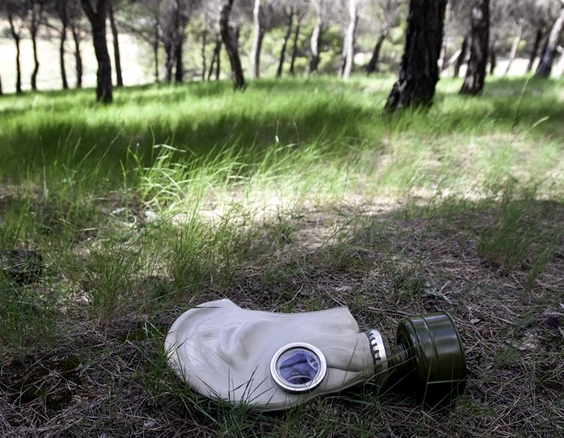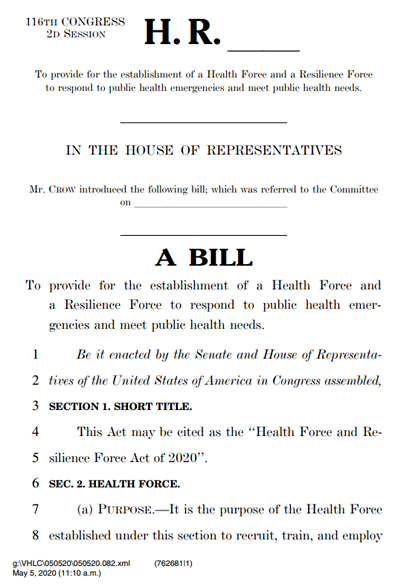This article is part of World War “V”: The COVID-19 Pandemic, a collection of all CNS COVID-19-related articles.
June 12, 2020
Richard Pilch and Rhianna Tyson Kreger
A simplified way to assess and address the threat of biological weapons is to consider three key factors: the vulnerability of a population to a biological attack, the capability of an adversary to carry out an attack, and the intent or motivation of an adversary to do so. COVID-19 offers important lessons in each of these areas, for both potential adversaries and US stakeholders responsible for countering them.

Vulnerability
COVID-19 has unequivocally demonstrated the vulnerability of US and global populations to biological threats, whether of natural or deliberate origin. In our global society, pathogens have ready access to much of the world, traveling on or inside humans, animals, plants, or commerce. For example, more than 43,000 people have flown from China to the United States—on 1,300 direct flights to 17 different US cities—since COVID-19 was first identified in China. [1] The US healthcare system is lean and depends on global supply chains, both of which contribute to capacity limitations during a large-scale event. Medical countermeasures such as diagnostics, therapeutics, and vaccines require resources and time to develop, test, and deploy. And citizen compliance with risk-reduction measures is influenced by civil liberties communication deficiencies and confusion spurred by fractured leadership at the state and federal level, and, importantly, disinformation from malign influence campaigns. Most notably, COVID-19 has demonstrated the vulnerability of the US and global economy to biological threats, exposing the potential economic impact of an attack.
Capability
COVID-19 has challenged a number of longstanding assumptions regarding which biological agents might be used as weapons. US biodefense efforts have long focused on agents that had been historically developed as weapons, such as Bacillus anthracis (the causative agent of anthrax), despite warnings to broaden the focus. For example, a 1994 panel of Russian biological warfare (BW) experts listed influenza virus among the top eleven biological agents “very likely to be used” as weapons. [2] The Russian Federation subsequently recommended that influenza virus be monitored as a potential biological weapon, falling within the parameters of the Biological Weapons Convention (BWC), an international disarmament treaty that prohibits biological weapons development and related activities. [3] US biodefense investments did not change as a result of these warnings, however. Moreover, US assessments continued to indicate that, with the exception of smallpox, contagious diseases like influenza (and now COVID-19) would be of limited appeal from a BW perspective, [4] despite clear asymmetrical advantages including low-cost, low-tech production and dissemination using human vectors. [5]
If investments bolster public health surveillance and healthcare capacity, and research and development efforts target threat-agnostic countermeasures, benefits will be realized whether there is ever a deliberate biological attack.
These advantages underscore the difference between traditional warfighting and terrorism: they have different goals, and thus different selection criteria for their weapons of choice. The experience of COVID-19 suggests that we must broaden the biodefense aperture to include agents that possess specific characteristics that make them potential agents of disruption from a terrorist standpoint, including the ability to spread rapidly from person-to-person as does COVID-19.
Intent
Any adversary looking for a radical leveling approach—whether an asymmetrical state actor like North Korea or a motivated terrorist organization—may be influenced by COVID-19’s demonstrated public health, economic, and social impact. Such influence is not simply theoretical: during the early months of the pandemic, extremist organizations encouraged affected members to deliberately spread their illness among target populations, [6] while individuals sought to capitalize on COVID-19 concerns while perpetrating crimes [7] and hoaxes. [8] The world is indeed watching, and has now witnessed firsthand how disruptive a biological attack might be.
Path Forward
Just as COVID-19 may influence asymmetrical actors to pursue biological weapons, so must US stakeholders benefit from COVID-19’s lessons in order to (1) mitigate exposed vulnerabilities, and (2) preempt biological-weapons capabilities and intent.
The most cost-effective approach to mitigate vulnerabilities is to invest in solutions that provide value against both natural and deliberate threats. If investments bolster public health surveillance and healthcare capacity (such as Congressman Panetta, Congressman Crow, and Congresswoman Underwood’s May 2020 Health Force legislation [9]), and research and development efforts target threat-agnostic countermeasures (such as rapid, scalable vaccine platforms [10]), benefits will be realized whether there is ever a deliberate biological attack. Such investments must map to a validated preparedness and response plan that we routinely exercise to ensure clear roles and responsibilities, internal and external communication and information sharing, and mobilization of assets. And because disinformation can affect pandemics by sowing confusion and distrust, we must proactively combat such malign influence through fact-checking, clear and consistent communication by reliable government sources, and official debunking of false claims.
To pre-empt biological weapons capabilities and intent, we must monitor indicators of intent and act on the basis of international law (the BWC) and corresponding national legislation to (a) dissuade and deter the pursuit of biological weapons, and (b) deny and disrupt access to the building blocks for such weapons, including pathogens, infrastructure, and expertise. [11] The goal is to focus risk-mitigation efforts “left-of-launch,” i.e., before an attack has occurred, to maximize the return on investment. Just as from a natural disease standpoint we must engage at the animal-human interface to curtail the cultural practices that have led to the majority of recent natural outbreaks with global impact (SARS 2003, H5N1 and H7N9 influenza, Ebola outbreaks in West Africa and DRC, and now COVID-19), pre-empting biological weapons-related activities before an attack ever occurs reduces risk more effectively than any post-event mitigation.
Looking back now, US government officials and citizens alike may recognize a missed opportunity to prevent the devastation of COVID-19. We must learn from this experience to ensure that history does not repeat itself in the face of both natural and deliberate biological threats of the future.
The world is watching.
Dr. Richard Pilch is Director of the Chemical and Biological Weapons Nonproliferation Program at the James Martin Center for Nonproliferation Studies (CNS), Middlebury Institute of International Studies at Monterey (MIIS). Rhianna Tyson Kreger is the Communications Director at CNS and Managing Editor of the Nonproliferation Review, the world’s leading journal focused on the causes and consequences of WMD proliferation.

